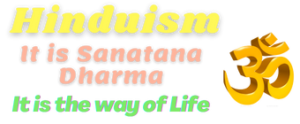Hinduism – Avatars, saints & Sages – an introduction…
![]()
The concept of Avatar In Hinduism
A fundamental belief in Hinduism as per Hindu Puranas is that God descends to earth to take birth as human (or other) forms whenever the good and pious people suffer and the evil ones have an upper hand. The word Avatar means descending (to earth). God descends to earth based on the needs of time, protects the good, destroy the evil and restore dharma (righteousness). The concept of Avatars came into vogue only in later historic periods of Itihas and Puranas (scriptural mythologies) and it is not found in Vedas.
At the core of Hinduism, God is only one. He is called Brahman in Upanishads. Brahman is beyond name and form and encompasses everything in creation. Any concept of God with name and form and also Avatar of God is also within the scope of Brahman only.
Avatars of Lord Vishnu
In Hinduism’s Vaishnava tradition, Vishnu, who is the God of protection, is considered the one and only prime God and he is verily the Brahman. In this tradition, Lord Vishnu has been attributed to taking Avatars. His 10 Avatars are considered to be important which are listed below:
(You can click on the respective names to know more details)
1) Matsya 2) Kurma 3) Varaha 4) Narasimha 5) Vamana 6) Parashurama 7) Rama 8) Krishna 9) Balarama 10) Kalki.
However, According to Srimad Bhagavatam which is one of the most widely accepted Puranas, Vishnu’s avatars are not restricted to 10; 14 more are also included (like Vayasa, Nara-Narayana, Mohini, Narada, Dattatreya and so on).
Avatara Purushas
Srimad Bhagavatam also states that Avatars are countless. Such a statement too is logical considering the fact that Puranas were written thousands of years ago. Naturally, more Avatars coming to earth is quite in order because Avatars, by definition come to earth whenever dharma is in danger and the wicked and evil forces are in the rise.
Thus in Hinduism, ardent devotees hail several Mahatma’s of later periods as Avatara Purushas. Their lives and teachings too become extremely important as puranas and scriptures. Unlike old puranas in Sanskrit, the Avatara Purushas give teachings in their local languages and are far more simpler to comprehend and put to practice in life. Invariably, their teachings are in resonance with the scriptures.
Here are some Avatara Purushas worshiped by Hindus (you can click at the names to read more about each of them):
- Shri Shankaracharya is hailed as an Avatar of Lord Shiva
- Sri Chaitanya Mahaprabhu is hailed as an Avatar of Radha.
- Sri Ramakrishna Paramahamsa is considered a divine Avatar
- Shirdi Saibaba is considered an Avatar of God, whose appeal broke the barriers of Hindus and Muslims
- Sri Satya Saibaba is considered an Avatar of Shiva-Shakti
- Swami Vivekananda is hailed as an Avatar of Shiva by some of his guru bhais and devotees.
- Bhagwan Ramana Maharshi – though he is a Purna Jnani (who is beyond the concept of Avatars) , there are some devotees who consider him an Avatar of Lord Subrahmanya.
- Mata Amritanandamayi (Amma) is considered an the Avatar of Devi Parashakti.
Featured articles on Avatars, Avatara Purushas & Saints
Recent blog posts on Avatars of Lord Vishnu…
Recent blog posts on Sri Ramakrishna Paramahamsa
Recent blog posts on Bhagwan Ramana Maharshi
Recent blog posts on Mata Amritanandamayi
Recent blog posts on other Saints & Sages
![]()






















